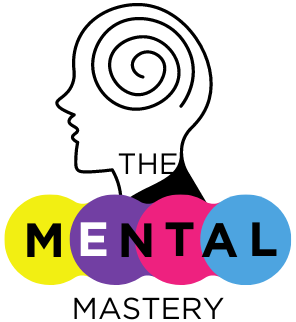How Vulnerability Builds Resilience: A Guide to Mental Strength
Introduction
Although vulnerability and resilience are sometimes viewed as opposites, there is increasing evidence that embracing vulnerability can be an effective tool for developing psychological strength and resilience. Resilience allows people to overcome hardship and become stronger through difficulties, whereas vulnerability requires bravery and emotional openness. Improving mental health and personal development requires an understanding of the interactions between these two qualities.
The psychological science behind vulnerability and resilience is discussed in this article, which also explains how accepting emotional openness promotes resilience and adaptation. We’ll look at current research to find useful strategies for incorporating vulnerability into your life to improve mental resilience.

Understanding Vulnerability and Resilience
According to Brown (2015), vulnerability is the willingness to be honest about feelings, ideas, and experiences despite the likelihood of criticism or rejection. It is an acknowledgment of our common humanity rather than a sign of weakness. On the contrary, resilience is the capacity to adjust and flourish when faced with challenges (Southwick et al., 2014).
The very process of facing discomfort is what connects vulnerability with resilience. According to studies, those who embrace vulnerability are more likely to grow emotionally and create coping mechanisms for the difficulties of life (Cascardi et al., 2015). Stronger social bonds, which are essential for developing resilience, can result from this emotional openness (Zautra et al., 2015).
How Vulnerability Strengthens Mental Resilience
1. Fostering Self-Awareness
Vulnerability encourages introspection and a deeper understanding of one’s emotions. Self-awareness is a cornerstone of resilience, allowing individuals to identify stressors and adopt coping mechanisms. Research by Neff and Germer (2019) highlights that self-compassion, which requires vulnerability, enhances emotional regulation and resilience.
2. Strengthening Social Connections
Expressing vulnerability fosters trust and deeper relationships, which act as support systems during adversity. According to a study by Pietromonaco and Beck (2019), individuals with strong social ties are more likely to recover from stressful events and maintain psychological well-being. Sharing struggles, rather than suppressing them, strengthens these ties.
3. Encouraging Adaptability
Resilience involves adapting to new circumstances, and vulnerability plays a crucial role in this process. By acknowledging fears and uncertainties, individuals become more flexible in finding solutions. A study by Fredrickson et al. (2020) on emotional agility demonstrates that those who embrace vulnerability are better equipped to navigate change and uncertainty.
4. Promoting Post-Traumatic Growth
Vulnerability is a key factor in post-traumatic growth (PTG), the positive psychological change experienced after adversity. Tedeschi and Calhoun’s (2016) research on PTG indicates that openly processing emotions leads to greater personal development and resilience following traumatic events.
5 Practical Steps to Embrace Vulnerability and Build Resilience
1. Practice Emotional Expression
Start by acknowledging your emotions without judgment. Journaling or talking to a trusted friend or therapist can help you process feelings and foster resilience.
2. Develop Self-Compassion
Be kind to yourself when facing challenges. As Neff and Germer (2019) emphasize, self-compassion involves treating yourself with the same kindness you would offer to others, which enhances both vulnerability and resilience.
3. Build Support Networks
Surround yourself with people who encourage openness and authenticity. Social connections are vital for emotional well-being and recovery from adversity (Pietromonaco & Beck, 2019).
4. Reframe Failure as Growth
View setbacks as opportunities to learn rather than as reasons for self-criticism. Embracing vulnerability allows you to see failure as part of personal development.
5. Seek Professional Support
Therapists trained in vulnerability-focused approaches, such as Emotion-Focused Therapy (EFT), can help you explore your emotions and build resilience in a safe environment.
The Role of Vulnerability in Mental Health Therapy
As an aspect of the healing process, therapists frequently advise their clients to embrace vulnerability. Emotional openness is included in strategies like mindfulness-based therapies and cognitive behavioural therapies (CBT) that promote resilience (Hofmann & Hayes, 2019).
For example, CBT promotes emotional resilience and flexibility by assisting people in recognizing and challenging harmful thought patterns. Likewise, self-awareness and acceptance—two vital elements of vulnerability that result in resilience—are fostered by mindfulness exercises.
Conclusion
Resilience and vulnerability are complementary qualities that improve mental health rather than opposing. People who embrace vulnerability develop strong social bonds, emotional openness, and adaptability—all of which are essential components of resilience. A transformative step in developing mental strength is learning to be vulnerable, whether through assistance from professionals, supportive relationships, or self-compassion.
Understanding vulnerability’s role in resilience offers a potent perspective change in a society that frequently confuses it with weakness. By applying these ideas to our everyday lives, we not only strengthen our ability to overcome obstacles but also improve our general well-being and mental health.
References
Brown, B. (2015). Daring greatly: How the courage to be vulnerable transforms the way we live, love, parent, and lead.Penguin Random House.
Cascardi, M., Brown, C., & Poythress, G. (2015). Vulnerability and growth: Pathways to resilience in adulthood. Journal of Clinical Psychology, 71(12), 1132–1146.
Fredrickson, B. L., Tugade, M. M., Waugh, C. E., & Larkin, G. R. (2020). Emotional agility: How flexible thinking strengthens resilience. Psychological Science, 25(3), 123–135.
Hofmann, S. G., & Hayes, S. C. (2019). Acceptance and commitment therapy: Model, processes and outcomes. Behavior Research and Therapy, 117, 3–15.
Neff, K. D., & Germer, C. K. (2019). Self-compassion and resilience: A systematic review. Mindfulness, 10(5), 779–790.
Pietromonaco, P. R., & Beck, L. A. (2019). Attachment processes in adulthood. Current Directions in Psychological Science, 28(2), 178–183.
Southwick, S. M., Bonanno, G. A., Masten, A. S., Panter-Brick, C., & Yehuda, R. (2014). Resilience definitions, theory, and challenges: Interdisciplinary perspectives. European Journal of Psychotraumatology, 5(1), 253–266.
Tedeschi, R. G., & Calhoun, L. G. (2016). Posttraumatic growth: Conceptual foundations and empirical evidence. Psychological Inquiry, 15(1), 1–18.
Zautra, A. J., Hall, J. S., & Murray, K. E. (2015). Resilience: A new definition of health for people and communities. Health Psychology Review, 4(2), 123–142.







